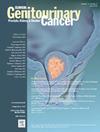Effectiveness and Safety of Second-line Tyrosine Kinase Inhibitors After Discontinuation of First-line Immune-oncology Combination Therapy Because of Adverse Events in the Patients With Metastatic Renal Cell Carcinoma
IF 2.7
3区 医学
Q3 ONCOLOGY
引用次数: 0
Abstract
Introduction
Effectiveness and safety of second-line tyrosine kinase inhibitors (TKIs) in patients with metastatic renal cell carcinoma (mRCC) for whom first-line immuno-oncology (I-O) combination therapy was discontinued because of adverse events (AEs) remain to be determined.
Patients and methods
Clinicopathological data were retrospectively collected from 34 institutions between August 2018 and January 2022 for 243 patients with mRCC who received second-line TKIs after first-line I-O combination therapy. Two patients who requested discontinuation of first-line I-O combination therapy were excluded. Oncological outcomes and safety were compared between patients who discontinued first-line I-O combination therapy because of progressive disease (Group PD) and AEs (Group AE). First- and second-line overall survival (OS) were defined as the time from the start of first- and second-line therapy to death, respectively. Propensity score matching was applied to adjust prognostic factors between the 2 groups.
Results
There were 179 patients in Group PD and 62 patients in Group AE. Objective response rate and disease control rate were similar between the 2 groups. Progression-free survival (PFS), second-line OS, and first-line OS were significantly longer in Group AE than in Group PD (median 13.6 months vs. 8.5 months, P = 0.005; median not reached [NR] vs. 19.5 months, P = .005; median NR vs. 30.8 months, P = .012, respectively). After propensity score matching, PFS and second-line OS were still significantly longer and first-line OS tended to be longer in Group AE than in Group PD. There were no significant differences in the occurrence of AEs of any grade, including severe grades of 3 or greater, between the 2 groups.
Conclusion
Second-line TKIs are safe and at least as effective in patients with mRCC who discontinued first-line I-O combination therapy because of AEs as they are in patients who discontinued because of PD.
转移性肾癌患者因不良事件而停止一线免疫肿瘤联合治疗后二线酪氨酸激酶抑制剂的有效性和安全性
二线酪氨酸激酶抑制剂(TKIs)在因不良事件(ae)而停止一线免疫-肿瘤(I-O)联合治疗的转移性肾细胞癌(mRCC)患者中的有效性和安全性仍有待确定。患者和方法:回顾性收集2018年8月至2022年1月34家机构243例mRCC患者的临床病理资料,这些患者在一线I-O联合治疗后接受了二线tki。2例要求停止一线I-O联合治疗的患者被排除在外。比较了因疾病进展而停止一线I-O联合治疗的患者(PD组)和AE组(AE组)的肿瘤预后和安全性。一线和二线总生存期(OS)分别定义为从一线和二线治疗开始到死亡的时间。采用倾向评分匹配调整两组预后因素。结果:PD组179例,AE组62例。两组患者客观有效率及疾病控制率相近。AE组的无进展生存期(PFS)、二线OS和一线OS均明显长于PD组(中位13.6个月vs 8.5个月,P = 0.005;中位未达到[NR] vs. 19.5个月,P = 0.005;中位NR vs 30.8个月,P = 0.012)。倾向评分匹配后,AE组的PFS和二线OS仍明显长于PD组,一线OS倾向于长于AE组。两组之间任何级别的ae(包括严重级别为3级或以上的ae)的发生率均无显著差异。结论:二线TKIs对于因ae而停止一线I-O联合治疗的mRCC患者是安全的,至少与因PD而停止治疗的患者一样有效。
本文章由计算机程序翻译,如有差异,请以英文原文为准。
求助全文
约1分钟内获得全文
求助全文
来源期刊

Clinical genitourinary cancer
医学-泌尿学与肾脏学
CiteScore
5.20
自引率
6.20%
发文量
201
审稿时长
54 days
期刊介绍:
Clinical Genitourinary Cancer is a peer-reviewed journal that publishes original articles describing various aspects of clinical and translational research in genitourinary cancers. Clinical Genitourinary Cancer is devoted to articles on detection, diagnosis, prevention, and treatment of genitourinary cancers. The main emphasis is on recent scientific developments in all areas related to genitourinary malignancies. Specific areas of interest include clinical research and mechanistic approaches; drug sensitivity and resistance; gene and antisense therapy; pathology, markers, and prognostic indicators; chemoprevention strategies; multimodality therapy; and integration of various approaches.
 求助内容:
求助内容: 应助结果提醒方式:
应助结果提醒方式:


